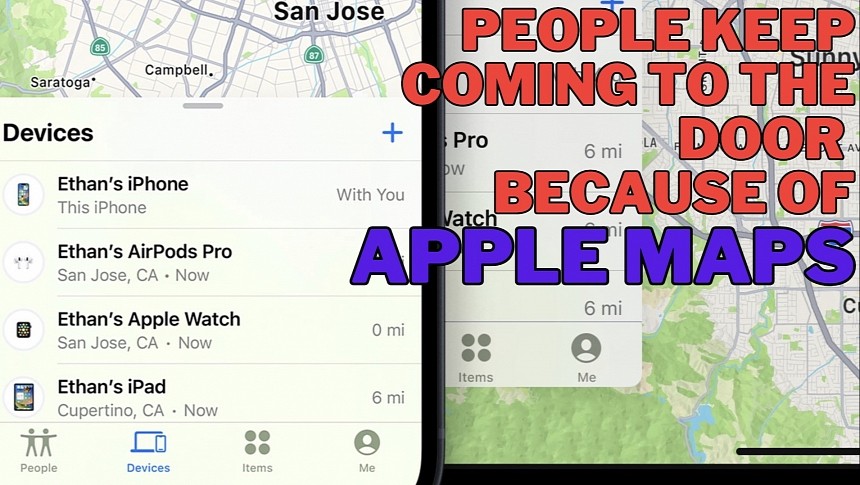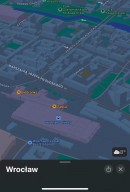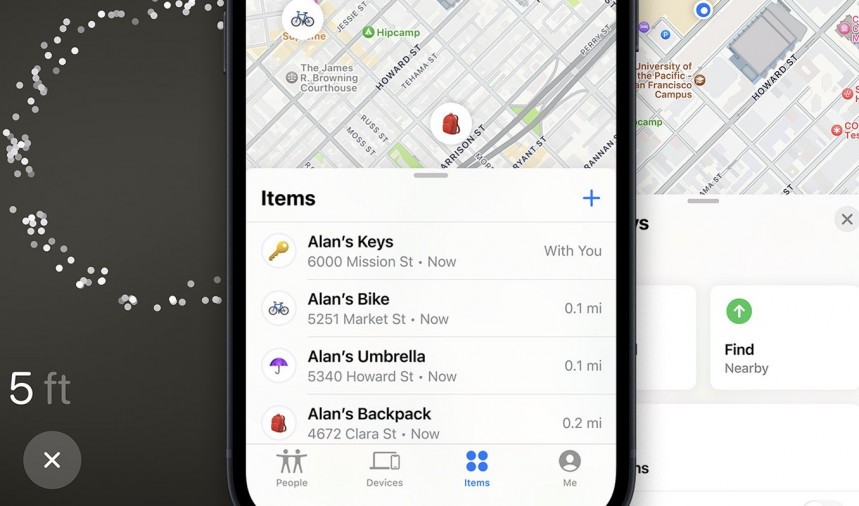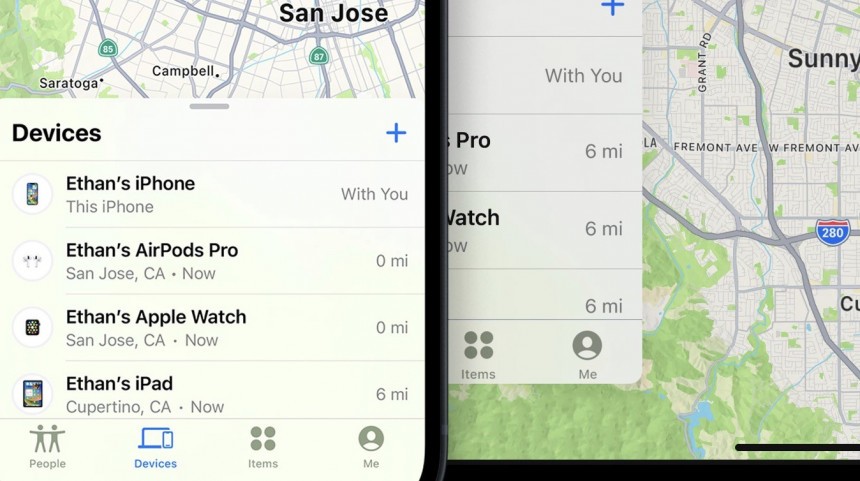In addition to navigation, Apple Maps is also responsible for pointing users to the location indicated by the Find My app. In one case, however, Apple Maps is making a horrible error.
A man in Texas claims people keep coming to his door accusing him of stealing their Apple devices. At first, he had no idea what was happening, but after eventually chatting with some of the calmer visitors, he figured it out.
These people were all Apple users who lost their devices. The Find My application on their iPhones claimed these devices were located at his address. As such, everybody followed the directions provided by Apple Maps and came to his door.
Needless to say, he isn’t a serial thief, nor is he playing hide and seek with their devices. The man says he has nothing to do with the lost Apple products. Yet, he now warns he’s going to sue Apple because the company is ignoring his calls for help.
Once enrolled in the application, the device’s location can be monitored in real time. Nobody else can control a device because it’s paired with the master account.
The purpose of the application is to make it easy for owners to find their lost devices. At the same time, it also ended up becoming a valuable tool against thieves. Apple customers reach out to the police with Find My information, eventually pointing law enforcement precisely to the location of criminals.
Apple uses multiple approaches for broadcasting live location information in the Find My application. AirTags, for example, can connect to nearby iPhones to show their location to the owner. As a result, something that’s tracked with an AirTag will almost always show up in Find My, unless someone removes the CR2032 battery.
When the location of a lost device shows up in the Find My app, users can explore the region and get directions to the address with Apple Maps. The navigation application offers the typical route guidance right to the point indicated by Find My.
After further inspection, he figured out what was happening. It was all caused by Apple Maps.
The man's home was the first built in his neighborhood. Built several years ago, the house complex is already available on Apple Maps with Look Around and everything. Apple, therefore, has updated data on the region.
What Apple doesn’t have is the correct address. The man found out that all houses in the neighborhood have the same address. His address, that is. This is because when it was built, his home was the first to get a registered address, so when the complex was added to Apple Maps, this was the only information available.
In other words, no matter where you point Apple Maps in the neighborhood, it still sends you to the man’s door.
In Schuster’s case, however, Apple seems to ignore all requests for help. The man says he reached out to Apple, but his ticket was eventually closed.
The man is afraid someone drunk or outraged would eventually show up at his door looking for their devices, eventually leading to something a lot more dangerous. He says he already has video recordings of angry people knocking on his door and shouting for their gadgets, so the Apple Maps update must be made quickly.
Without an Apple response, the man says he’s ready to take the whole thing to court. “Expect to receive a lawsuit from me,” he told Apple in a post on Instagram, claiming he’s had enough. People keep coming to his door asking for their devices, and yet, Apple still ignores all his requests for support.
The iPhone maker hasn’t yet commented on the case, but the more exposure it gets, the bigger the chances for the Apple Maps data to be updated accordingly. I have also contacted the company for an official statement on the accusations and will update the article if and when I hear back from it. For now, the only thing Schuster can do is reach out to Apple Support repeatedly, hoping the case would be forwarded to someone in charge of Maps data.
These people were all Apple users who lost their devices. The Find My application on their iPhones claimed these devices were located at his address. As such, everybody followed the directions provided by Apple Maps and came to his door.
Needless to say, he isn’t a serial thief, nor is he playing hide and seek with their devices. The man says he has nothing to do with the lost Apple products. Yet, he now warns he’s going to sue Apple because the company is ignoring his calls for help.
How Find My works
Apple has developed a clever way to keep track of its devices. The Find My application, which is installed on iPhones, iPads, and other products developed by Apple, allows users to register these devices for live tracking.Once enrolled in the application, the device’s location can be monitored in real time. Nobody else can control a device because it’s paired with the master account.
The purpose of the application is to make it easy for owners to find their lost devices. At the same time, it also ended up becoming a valuable tool against thieves. Apple customers reach out to the police with Find My information, eventually pointing law enforcement precisely to the location of criminals.
Apple uses multiple approaches for broadcasting live location information in the Find My application. AirTags, for example, can connect to nearby iPhones to show their location to the owner. As a result, something that’s tracked with an AirTag will almost always show up in Find My, unless someone removes the CR2032 battery.
When the location of a lost device shows up in the Find My app, users can explore the region and get directions to the address with Apple Maps. The navigation application offers the typical route guidance right to the point indicated by Find My.
The Texas nightmare
In the case of Scott Schuster, Apple Maps pointed all these people to his door for no reason. Angry people were knocking at his door at random times of the day and night to ask for their devices. Some were confused, others were impatient, but all wanted their devices back.After further inspection, he figured out what was happening. It was all caused by Apple Maps.
The man's home was the first built in his neighborhood. Built several years ago, the house complex is already available on Apple Maps with Look Around and everything. Apple, therefore, has updated data on the region.
What Apple doesn’t have is the correct address. The man found out that all houses in the neighborhood have the same address. His address, that is. This is because when it was built, his home was the first to get a registered address, so when the complex was added to Apple Maps, this was the only information available.
In other words, no matter where you point Apple Maps in the neighborhood, it still sends you to the man’s door.
Apple’s (lack of) response
In theory, this can be easily updated by adding the correct information to Apple Maps. Such things happen occasionally, and this is precisely why both Google and Apple have editors in charge of updating Google Maps and Apple Maps with the correct details.In Schuster’s case, however, Apple seems to ignore all requests for help. The man says he reached out to Apple, but his ticket was eventually closed.
The man is afraid someone drunk or outraged would eventually show up at his door looking for their devices, eventually leading to something a lot more dangerous. He says he already has video recordings of angry people knocking on his door and shouting for their gadgets, so the Apple Maps update must be made quickly.
Without an Apple response, the man says he’s ready to take the whole thing to court. “Expect to receive a lawsuit from me,” he told Apple in a post on Instagram, claiming he’s had enough. People keep coming to his door asking for their devices, and yet, Apple still ignores all his requests for support.
The iPhone maker hasn’t yet commented on the case, but the more exposure it gets, the bigger the chances for the Apple Maps data to be updated accordingly. I have also contacted the company for an official statement on the accusations and will update the article if and when I hear back from it. For now, the only thing Schuster can do is reach out to Apple Support repeatedly, hoping the case would be forwarded to someone in charge of Maps data.












